|
WHALES
ABOUT - CLIMATE
- NATIONS - OCEAN PLASTIC
- WHALING
PLEASE
USE OUR
A-Z INDEX
TO NAVIGATE THIS SITE WHERE PAGE LINKS MAY LEAD TO EXTERNAL
SITES,
or: HOME
Anchovies
| Bass
| Bream
| Catfish
| Clams
| Cod
Coley
| Crabs
| Crayfish
| Eels
| Grouper
| Haddock
| Hake
| Halibut
| Herring
| Jellyfish
Krill
| Lobster
| Mackerel
| Marlin
| Monkfish
| Mullet
| Mussels
| Oysters
| Perch
| Piranha |
Plaice
| Pollock
| Prawns
| Rays
| Sablefish
| Salmon
Sardines
| Scallops
| Sharks
| Shrimp
| Skate
| Sole
| Sprat
| Squid
| Sturgeon
| Swordfish
| Trout
| Tuna
| Turbot
| Whiting
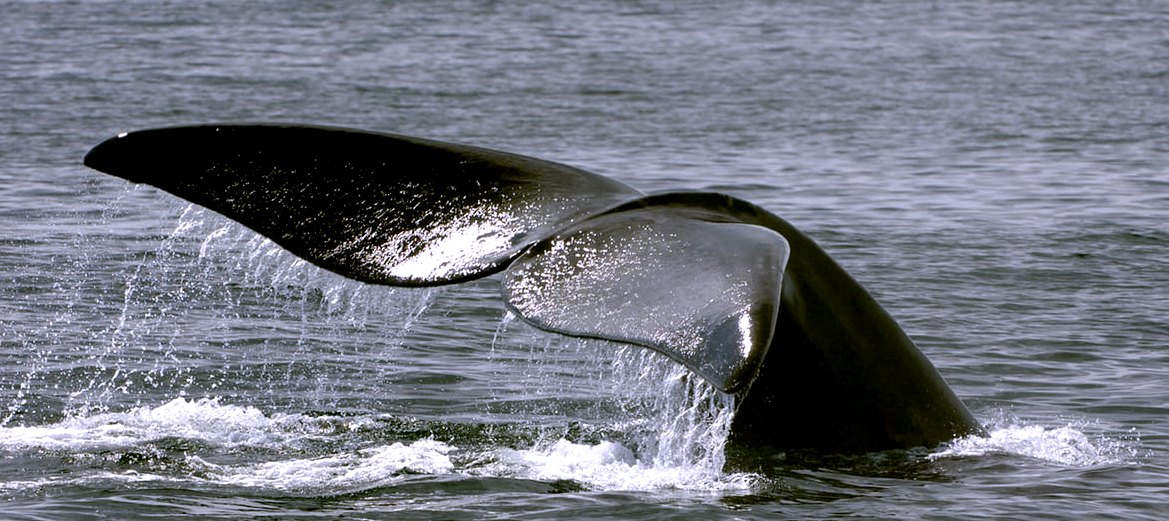
FLUKES - Grace
and beauty, these giant fins propel the whale at considerable
speed over thousands of miles from feeding to breeding
grounds.
There
is nothing quite like watching a whale's tail as it ducks down
under the water, except a humpback
broaching. These amazing creatures have evolved into the
largest species on earth, adapting to filter feeding to take
advantage of the food chain at an earlier stage, whereas
sharks feed on fish several stages on, rather less
efficiently. Sperm and killer whales are an exception, having
teeth to hunt other animals. Whales are known to teach, learn, cooperate,
scheme and grieve. It seems incredible that humans almost
hunted these magnificent animals to extinction in the quest
for oil and whale meat. Even today, so-called Japanese
researchers hunt whales in specially adapted ships, where it
is suspected that whale meat is reaching the market from this
source, despite whaling
being illegal.
Whales are a widely distributed and diverse group of fully aquatic placental marine mammals. They are an informal grouping within the infraorder Cetacea, usually excluding dolphins and porpoises. Whales,
dolphins and porpoises belong to the order Cetartiodactyla with even-toed ungulates and their closest living relatives are the hippopotamuses, having diverged about 40 million years ago. The two parvorders of whales, baleen whales (Mysticeti) and toothed
whales (Odontoceti), are thought to have split apart around 34
million years ago. The
whales comprise eight extant families: Balaenopteridae (the rorquals), Balaenidae
(right
whales), Cetotheriidae (the pygmy right whale), Eschrichtiidae
(the grey
whale), Monodontidae (belugas and narwhals), Physeteridae (the sperm whale), Kogiidae (the dwarf and pygmy sperm whale), and Ziphiidae (the beaked whales).
Whales are creatures of the open ocean; they feed, mate, give birth, suckle and raise their young at sea. So extreme is their adaptation to life underwater that they are unable to survive on land. Whales range in size from the 2.6 metres (8.5 ft) and 135 kilograms (298 lb) dwarf
sperm whale to the 29.9 metres (98 ft) and 190 metric tons (210 short tons) blue whale, which is the largest creature that has ever lived. The sperm whale is the largest toothed predator on earth. Several species exhibit sexual dimorphism, in that the females are larger than males. Baleen whales have no teeth; instead they have plates of baleen, a fringe-like structure used to expel water while retaining the
krill and plankton which they feed on. They use their throat pleats to expand the mouth to take in huge gulps of water. Balaenids have heads that can make up 40% of their body mass to take in water. Toothed whales, on the other hand, have conical teeth adapted to catching fish or
squid. Baleen whales have a well developed sense of "smell", whereas toothed whales have well-developed hearing − their hearing, that is adapted for both air and water, is so well developed that some can survive even if they are blind. Some species, such as sperm whales, are well adapted for diving to great depths to catch squid and other favoured prey.
Whales have evolved from land-living mammals. As such whales must breathe
air regularly, although they can remain submerged under
water for long periods of time. Some species such as the sperm whale are able to stay submerged for as much as 90 minutes. They have blowholes (modified nostrils) located on top of their heads, through which air is taken in and expelled. They are warm-blooded, and have a layer of fat, or
blubber, under the skin. With streamlined fusiform bodies and two limbs that are modified into flippers, whales can travel at up to 20 knots, though they are not as flexible or agile as seals. Whales produce a great variety of vocalizations, notably the extended songs of the humpback whale. Although whales are widespread, most species prefer the colder waters of the Northern and Southern Hemispheres, and migrate to the equator to give birth. Species such as humpbacks and blue whales are capable of
traveling thousands of miles without feeding. Males typically mate with multiple females every year, but females only mate every two to three years. Calves are typically born in the spring and summer months and females bear all the responsibility for raising them. Mothers of some species fast and nurse their young for one to two years.
Once relentlessly hunted, whales are now protected by international law. The North
Atlantic right whales nearly became extinct in the twentieth century, with a population low of 450, and the North Pacific grey whale population is ranked Critically Endangered by the IUCN. Besides whaling, they also face threats from bycatch and marine pollution. The meat, blubber and baleen of whales have traditionally been used by indigenous peoples of the
Arctic. Whales have been depicted in various cultures worldwide, notably by the Inuit and the coastal peoples of Vietnam and Ghana, who sometimes hold whale funerals. Whales occasionally feature in literature and film, as in the great white whale of
Herman
Melville's Moby Dick. Small whales, such as belugas, are sometimes kept in captivity and trained to perform tricks, but breeding success has been poor and the animals often die within a few months of capture. Whale watching has become a form of tourism around the
world.
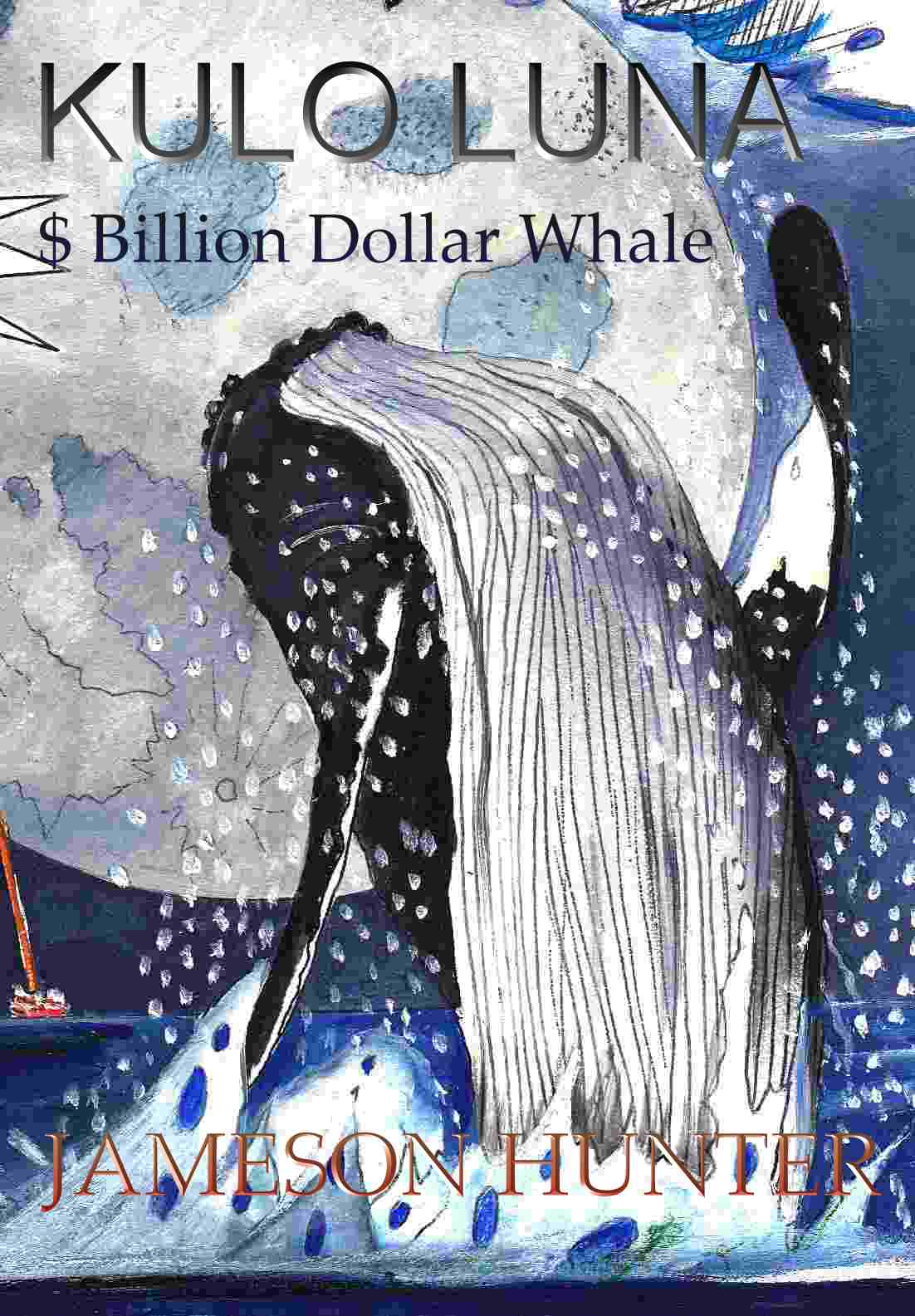
KULO
LUNA - Is the story of a giant humpback whale and her
friend Kana, who is killed by pirate whalers in the south
pacific ocean. Enraged by the death of the young whale, Kulo
attacks the pirate ship, finally sinking it, but getting
herself wounded in the process.
A
Japanese cartel put a $multi-million dollar bounty on her
head, when another whaling ship gives chase. Before not too
long the media hear of the hunt and betting begins all around
the world. At this point our hero, Johnny Storm, abandons a
solar boat race to try and help the whale where his boat, the
Elizabeth Swan, is not far away from the last sighting.
John
rescues Kulo from being eaten by sharks, but that is just the
beginning of their adventure, as the pirates whalers close in
for the kill ........
Copyright © Jameson Hunter 2006 and 2018. The right of Jameson Hunter to be identified as the author of this work has been asserted in accordance with section 77 and 78 of the Copyright Designs and Patents Act 1988. In this work of fiction, the characters, places and events are either the product of the authorís imagination or they are used entirely fictitiously. Blueplanet Universal Productions & Electrick Publications, London, England. ISBN: 0-953-7824-01
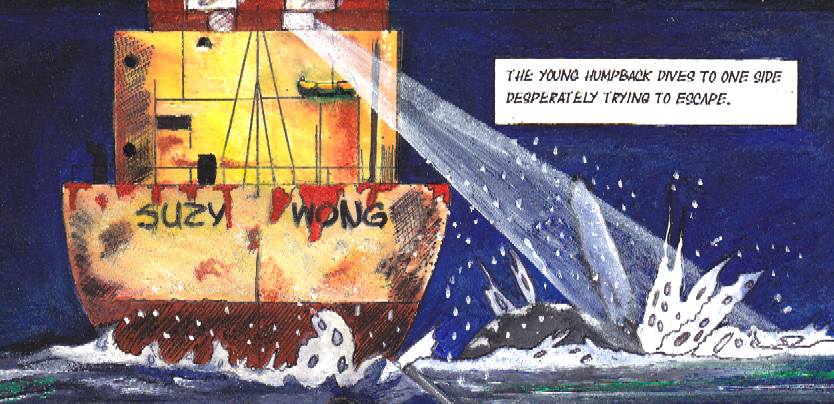
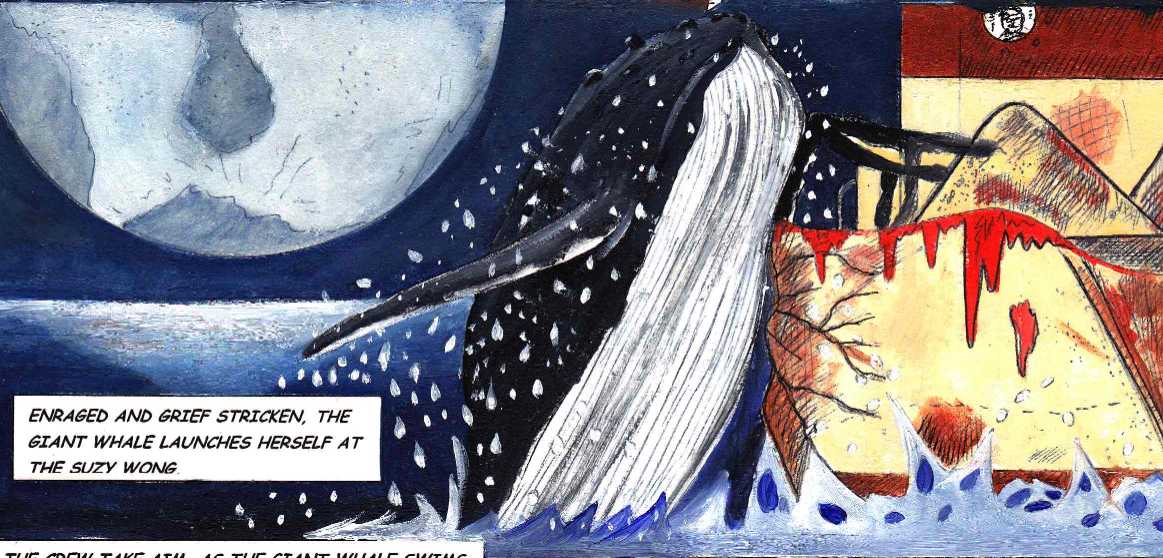
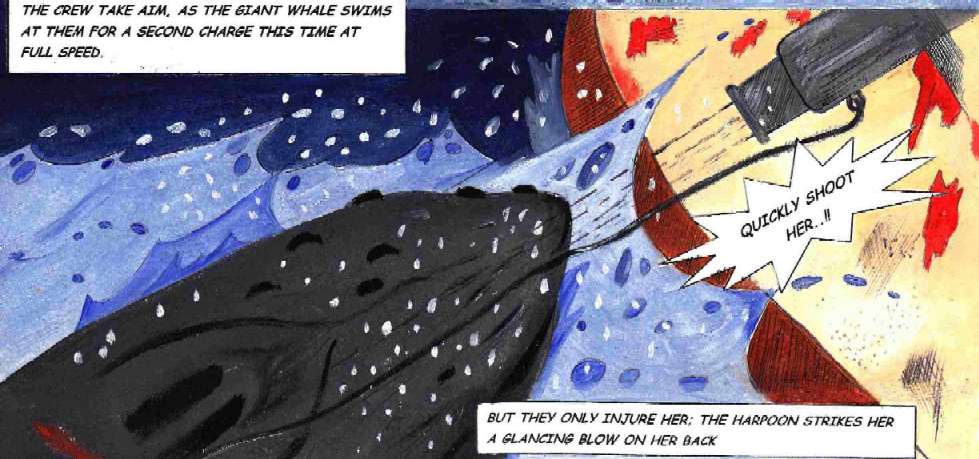
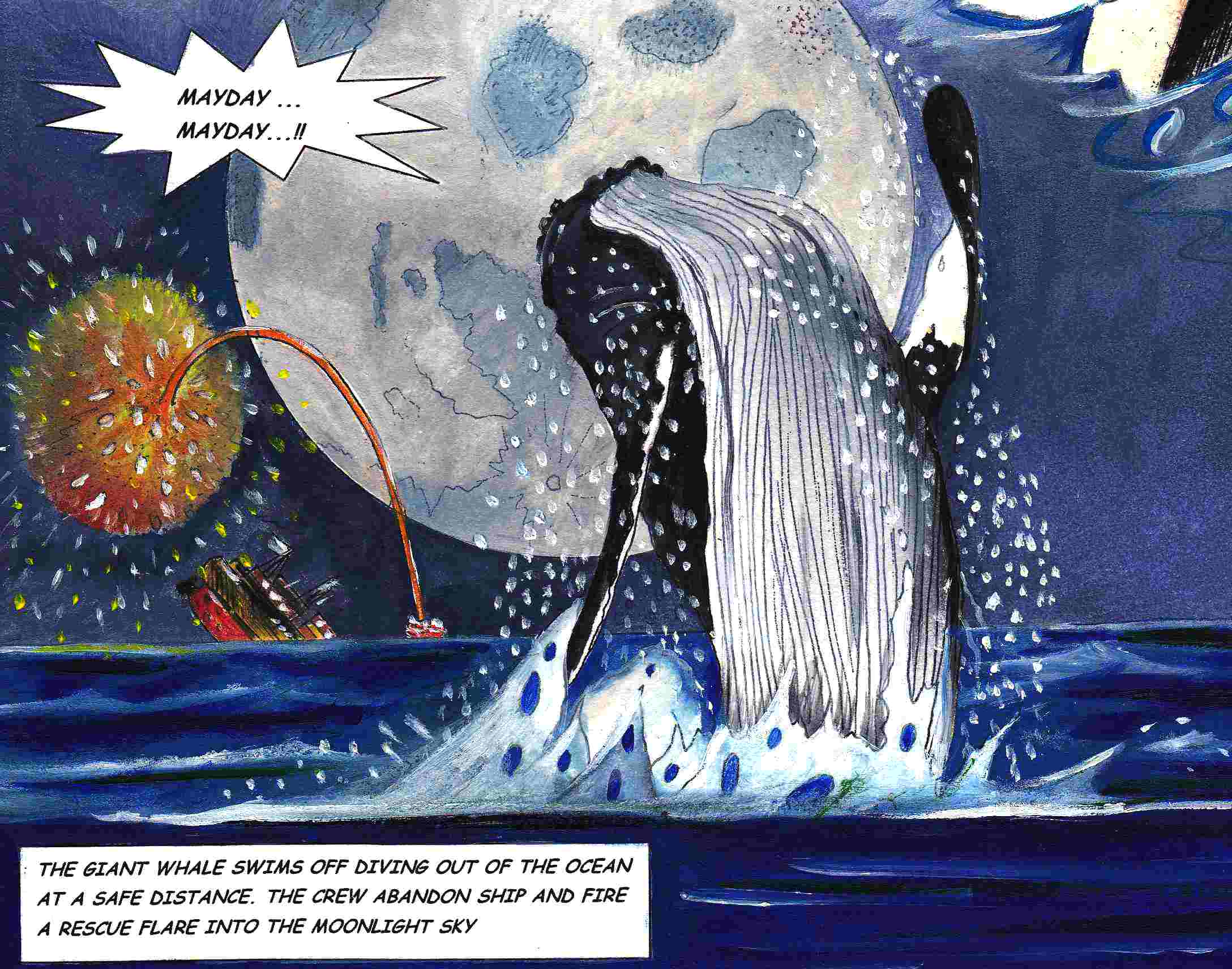
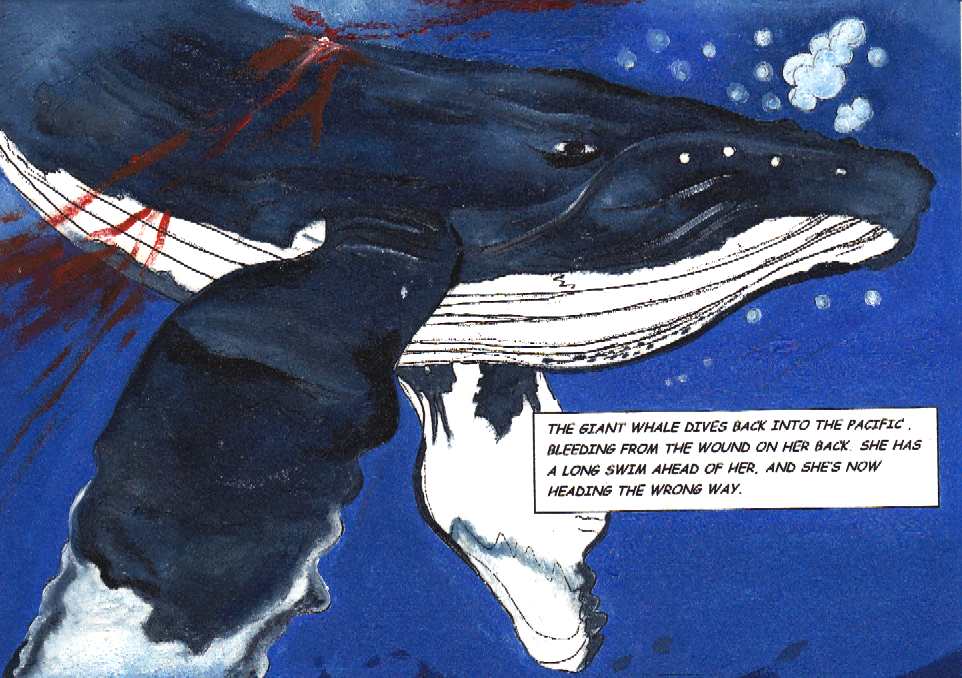
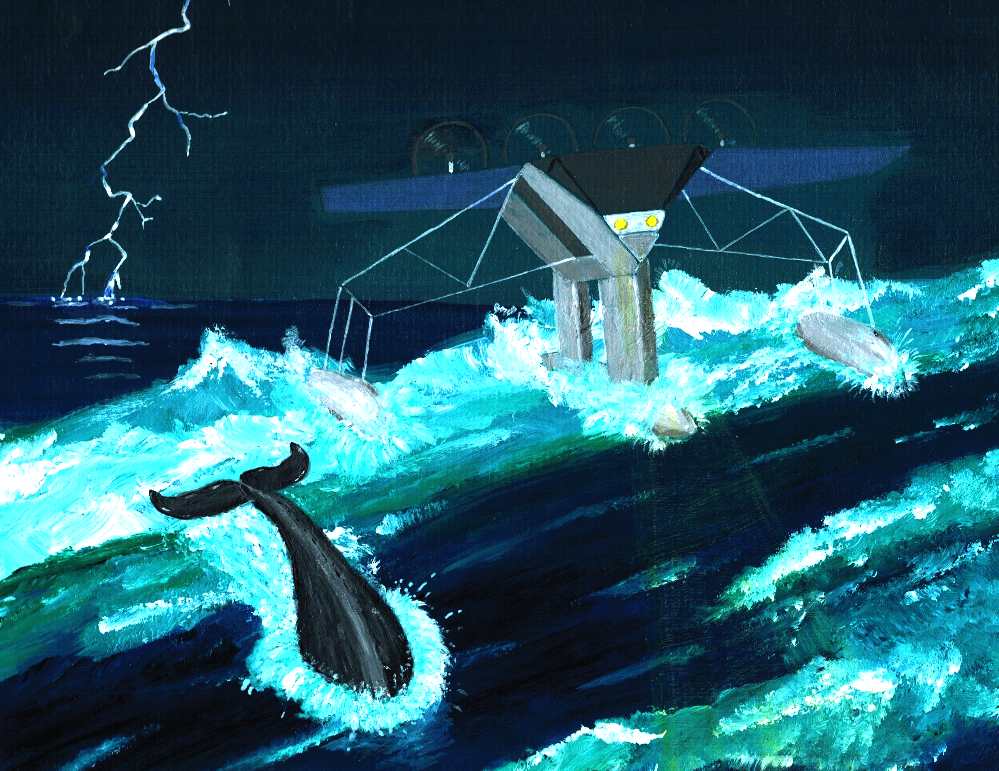
|
SCENE
|
DESCRIPTION
|
LOCATION
|
|
|
|
|
|
Chapter
1
|
Arctic
Melt (Prologue)
|
580
W, 750 N
|
|
Chapter
2
|
Freelance
|
510
30íN, 00
|
|
Chapter
3
|
Flashback
|
420
N,
880 W
|
|
Chapter
4
|
Sydney
Australia
|
330
S, 1510 E
|
|
Chapter
5
|
English
Inventor
|
270
30íS, 1530 E
|
|
Chapter
6
|
Bat
Cave
|
330
20íS, 1520 E
|
|
Chapter
7
|
Arctic
Circle
|
500
N, 1700
W
|
|
Chapter
8
|
Whale
Sanctuary
|
200
N, 1600 W
|
|
Chapter
9
|
Moby
Dick
|
420
N, 700 W
|
|
Chapter
10
|
Pirates
|
330
N, 1290 E
|
|
Chapter
11
|
United
Nations
|
330
N, 1290 E
|
|
Chapter
12
|
Black
Market
|
330
N, 1290 E
|
|
Chapter
13
|
Solar
Race
|
200
N, 1600 W
|
|
Chapter
14
|
Darwin
to Adelaide
|
130
S, 1310 E Ė 350 S, 1380
E
|
|
Chapter
15
|
Six
Pack
|
200
N, 1600 W
|
|
Chapter
16
|
Whaling
Chase
|
240
N, 1410 E
|
|
Chapter
17
|
All
Hands
|
240
N, 1400 E
|
|
Chapter
18
|
SPLASH
|
40N0,
1550 W (Whale
Trust Maui)
|
|
Chapter
19
|
Sky
High
(deal)
|
380
S, 1450 E
|
|
Chapter
20
|
Empty
Ocean
|
200
N, 1600 E (middle of
Pacific)
|
|
Chapter
21
|
Abandoned
|
200
N, 1300 E (off Philippines)
|
|
Chapter
22
|
Open
Season (water)
|
330
N, 1290 E
|
|
Chapter
23
|
LadBet
International
|
470
N, 70 E
|
|
Chapter
24
|
Billion
Dollar Whale
|
250
N, 1250 E
|
|
Chapter
25
|
Hawaii
|
200
N, 1600 W
|
|
Chapter
26
|
Rash
Move
|
140
N, 1800 E
|
|
Chapter
27
|
Off
Course
|
150
N, 1550 E
|
|
Chapter
28
|
Shark
Attack
|
100
N, 1650 E
|
|
Chapter
29
|
Sick
Whale
|
100
N, 1650 E
|
|
Chapter
30
|
Medical
SOS
|
100
N, 1650
E
|
|
Chapter
31
|
Whale
Nurse
|
100
N, 1650 E
|
|
Chapter
32
|
Learning
Curve
|
100
N, 1650 E
|
|
Chapter
33
|
Storm
Clouds
|
150
S, 1550 E
|
|
Chapter
34
|
The
Coral Sea
|
150
S, 1570 E
|
|
Chapter
35
|
Tell
Tail Signs
|
230
S, 1550 E
|
|
Chapter
36
|
Plastic
Island
|
20
S, 1600 E
|
|
Chapter
37
|
High
Regard
|
20
S, 1600 E
|
|
Chapter
38
|
Tickets
Please
|
20
S, 1600 E
|
|
Chapter
39
|
Media
Hounds
|
170
S, 1780E
|
|
Chapter
40
|
Breach
of Contract
|
200
S, 1520 E
|
|
Chapter
41
|
Botany
Bay
|
350
S, 1510 E
|
|
Chapter
42
|
Fraser
Island
|
250
S, 1530 E
|
|
Chapter
43
|
Congratulations
|
250
S, 1530 E
|
|
Chapter
44
|
Sweet
Sorrow (epilogue)
|
250
S, 1530 E
|
EAT
LIKE A WHALE
In
an effort to feed a
growing population we should look at
alternatives lower down the food chain to increase the ratio
at which protein is harvested from the ocean, so bypassing the
conventional food chain where at each stage of consumption
there are significant losses in the conversion process. Jellyfish,
squid, krill
and filter feeders such a mussels could play a part in filling the widening gap between falling
fish stocks and higher demand to feed
humans - so
relieving the pressure on tuna, salmon and other popular white
fish.
The problem being that plastic
in the ocean is poisoning all marine life, making seafood
potentially toxic and a health
risk in years to come .......
LINKS
& REFERENCE
https://

MARINE
LIFE - This humpback whale is one example of a magnificent
animal that is at the mercy of human
activity. Humans are for the most part unaware of the harm their fast-lane
lifestyles are causing. We aim to change that by doing all we
can to promote ocean
literacy.
Anchovies
| Bass
| Bream
| Catfish
| Clams
| Cod
Coley
| Crabs
| Crayfish
| Eels
| Grouper
| Haddock
| Hake
| Halibut
| Herring
| Jellyfish
Krill
| Lobster
| Mackerel
| Marlin
| Monkfish
| Mullet
| Mussels
| Oysters
| Perch
| Piranha |
Plaice
| Pollock
| Prawns
| Rays
| Sablefish
| Salmon
Sardines
| Scallops
| Sharks
| Shrimp
| Skate
| Sole
| Sprat
| Squid
| Sturgeon
| Swordfish
| Trout
| Tuna
| Turbot
| Whiting
This
website is provided on a free basis as a public information
service. Copyright © Cleaner
Oceans Foundation Ltd (COFL) (Company No: 4674774)
2022. Solar
Studios, BN271RF, United Kingdom.
COFL
is a charity without share capital.
|







